Lockheed Martin F-16B Orange Jumper
[ Page B-2 ]
F-16B conversion of the SUFA Academy kit
... continued from F-16B page B1......
Step 5
The SUFA kit has the appropriate small type F-16 intake as also used for the earlier blocks, like the F-16B.
Also "big mouth" intake parts are still in the sprues, can be dropped into the spares box.
The kit instructions in step 5 are thus OK for the F-16B as well.
Unfortunately
an issue is still there on the intake as such: on the Academy kit the distance
between the intake and the lower fuselage is too small. The RAM intake
and duct are barely visible but should be:
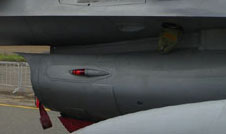 ...
...
real
F-16
Academy intake
Also, the earlier block F-16 planes
including the F-16B have also a more visible/prominent small side air
slot lips.
(NOTE: not applicable for the F-16I
SUFA; these planes do not have the air slot). Widening
up the gap and filling/smoothing the RAM intake area is thus needed on
the kit. (NOTE: I did not notice this error on my first F-16 CJ build).
OK, let's fix the problem....
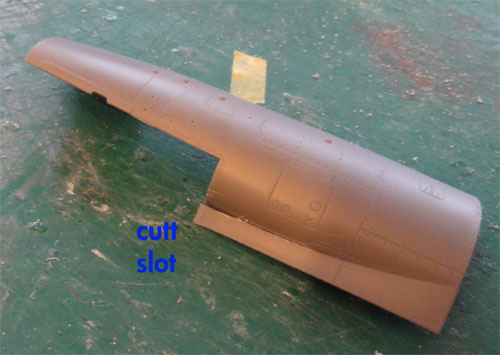
First, simply saw in a slot and bend
the air slot lip. Bend the lip a bit outwards.
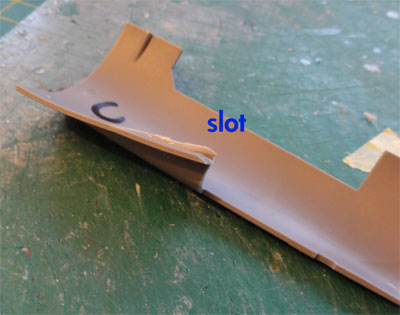
The intake was assembled now as per
instructions of step 5.
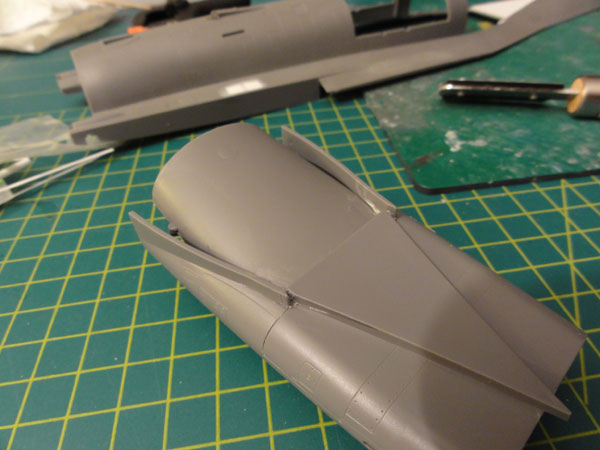
Nothing spectacular yet.
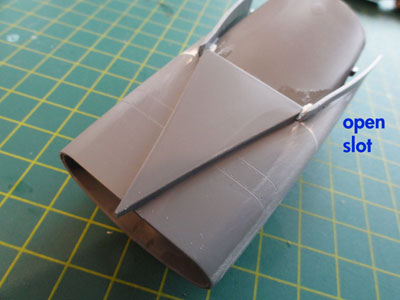
I recommend not yet to fix the forward
section part D79 to avoid sanding damage still needed.
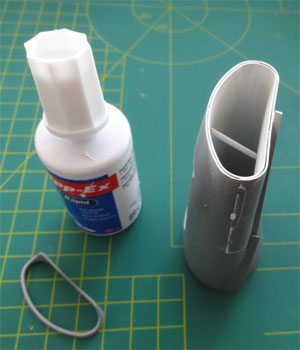
Tip: the small gaps in the intake
can be filled with "TIPEX" correction fluid.
Next, a section of plastic card was
set on top of the main intake after assembly. This will enlarge the gap
between the intake and the fuselage later on as needed.
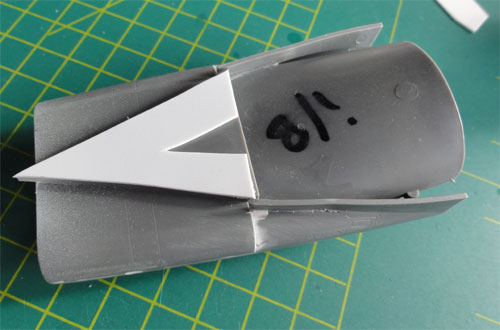
Set putty on the lips, let dry and
sand smooth... with here the result...
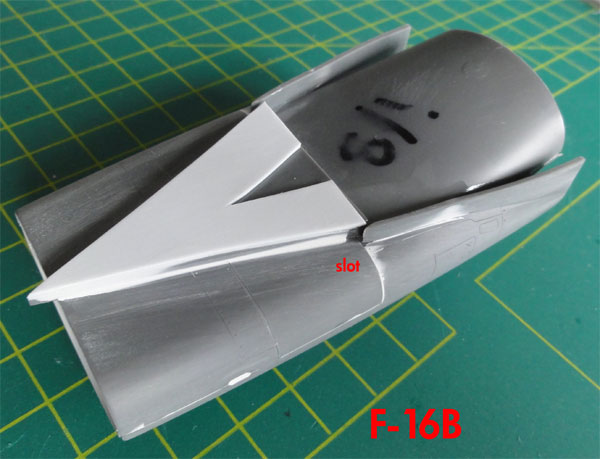
Now, let's move to the lower fuselage.
Cut out a section of say about 10
mm of the lower fuselage intake area. Make a triangular section of white
plastic card and insert in the area. Sand flush.
Do not yet fit the intake to the lower fuselage! Leave for later.
![]()
Steps 6-7
The main gear
bay is OK and similar to the Academy F-16CG/CJ kit,
but can use some extra detail by adding tubing and hydraulics through stretch
sprue and some card. Some effort was put here to get a nice result.

The assembly got a white base coat
and next painted details....
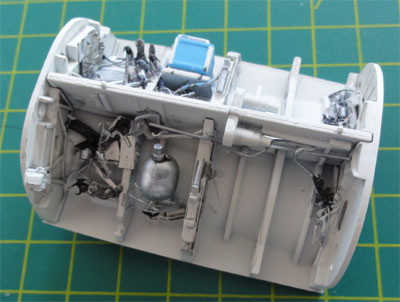
Step 8
The intake
tunnel is a very nice feature as in the first Academy F-16 kit but use
fan part C65 vfor the F-16B.
The rear intake tunnel was simply
assembled. Fit the aft intake on top of the main gear bay section, although
this will make aligning it later on with the forward intake more difficult.
Step 9
The dorsal
SUFA spine with the particular fairings and sensors is not required for
the F-16B. So step 9A is not applicable. Also the parachute housing is
different, look at the vertical fin instructions above
here for the F-16B MLU of the Dutch AF.
Fortunately
Academy F-16I SUFA kit provides an "unused " spare part K17 that
can be used for conventional F-16D two seaters, seen here.... (for future
kit releases?)
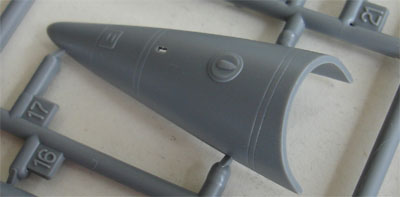
This eases the F-16B conversion considerably!!!
The bulkhead part K53 can also be used.
I suggest to leave fixing this fairing
K17 at a later stage after major fuselage assembly.
Step 10
The gun nozzle and fairing is better
now assembled and set in place as it can be better handled now. For the
F-16B I used the kit parts D67 + D68 which seem a little better and finer
than SUFA part K35.
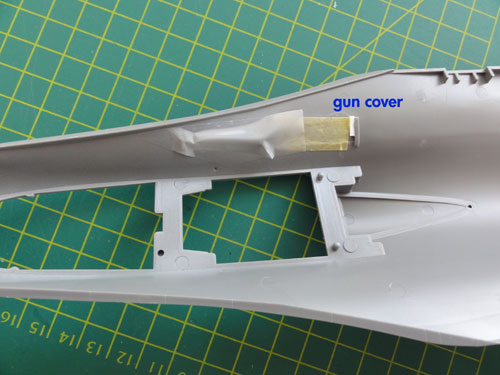
Inside the gun nozzle area,
a piece of tape was set to prevent any see through.
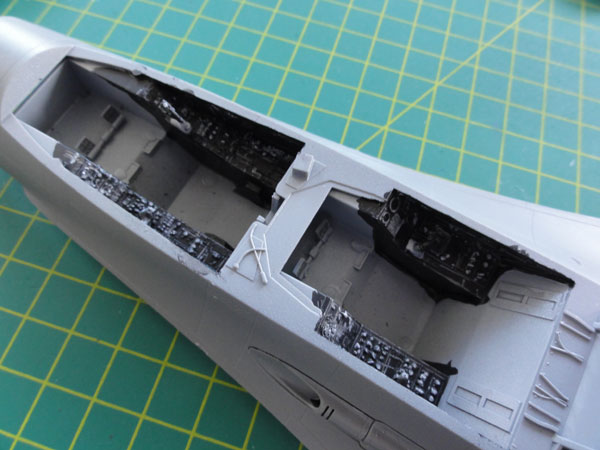
The
rest of the Parts like the conformal fuel tanks (CFT) are not applicable
for early block F-16's like the F-16B, so can be dropped into your spares
box.
Please note that kit instructions
for the ammunition bay are not provided, but the parts of the F-16CJ are
still there should you wish to have this detail in your F-16B model. If
this is desired, cut out the bay panels and add the details. I opted not
to add the internal gun and bay detail. Look
here for the instructions.... .
Step 11
Fitting in the cockpit tub can now
be done. Gaps need some filling with some strengthening rod at the tub.
The lower and
upper fuselage parts are now joined. Take care to carefully align symmetrical
the main gear bay, exactly in the middle.
This is an important stage and will require careful glueing. The end result is that you will find that the fit at the forward fuselage needs filler and some filler at the rear area.
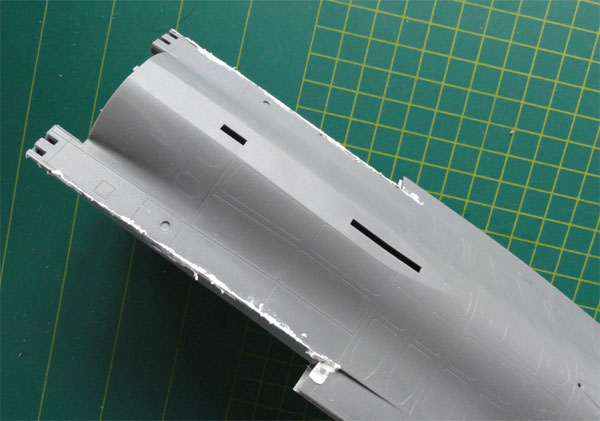
![]()
As the upper and lower fuselage halves
are set aside to dry and to become a stiff assembly.
After 24 hours drying, it is now time to set the prepared intake to the lower forward fuselage.
This requires quite some aligning
and may be some slight removal of material at the edges of the fuselage
intake gap. Force is needed with tape and clamps to close the gap between
all parts.
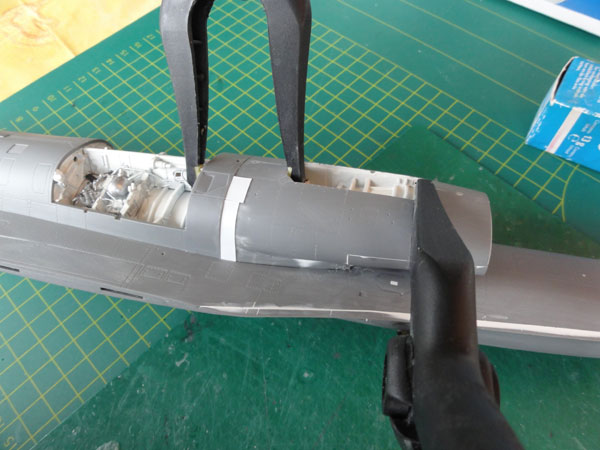
I could not achieve a flush assembly,
leave for a couple of hours to dry. Some thin card and putty is now
needed and followed by sanding to get a good result. This takes some
effort, but do it now as the model can now easily be handled.
Sanding and filling is needed a couple of times here.
![]()
As noted
before, the older block F-16's like the F-16B have the original thin base
vertical tail. The tail was already prepared as seen
here on page 1.
Now it is time to adapt the rear
fuselage joint. This needs a curved area to be added to fill the flat area
of the "thick base" Academy kit tail.
First, a section of 0,5 mm card was
shaped and added on top op the rear fuselage joint area. Note the opened
slot to accept the Hasegawa tail stab for a stronger joint.
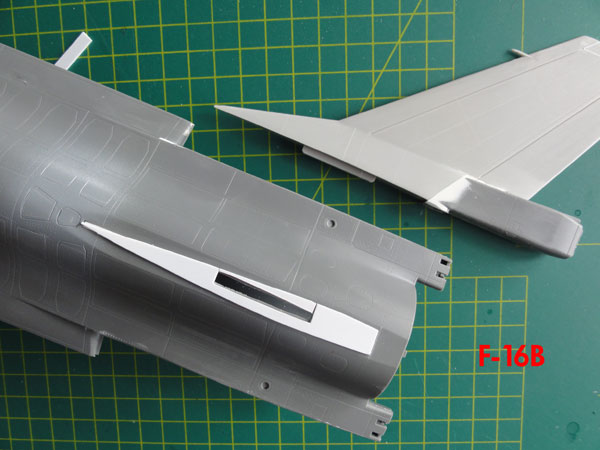
Then, the curve was achieved by filling
and sanding.
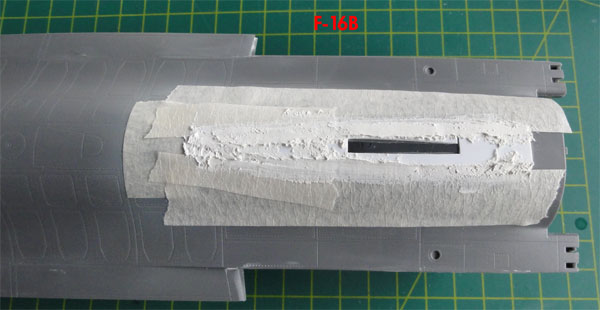
.. with the results...
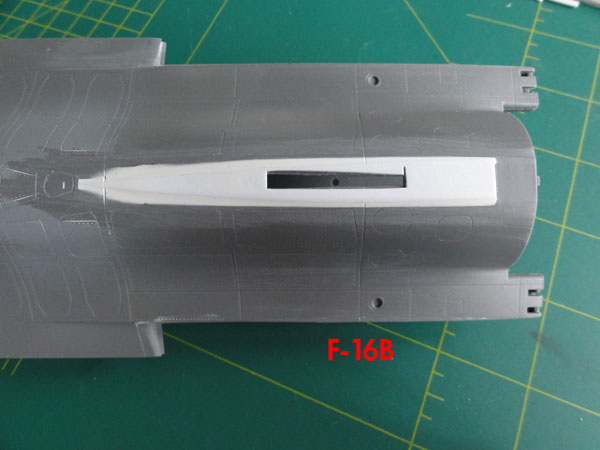
The vertical tail itself will be
set later after main wings are set onto the fuselage.
Steps 18-19
The wing assembly
is as on the Academy F-16CG/CJ kit. But for the F-16B, the moulded
leading edge RWR receivers are NOT
needed, so cut-off, sand in airfoil shape to have a straight clean leading
edge.
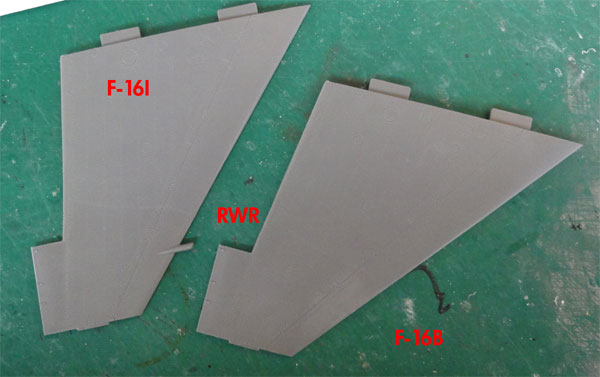
The Parts B13
for the static dischargers; these are best replaced with thin electric
wire.
Please note
that the strength of the wing joint-fuselage is very weak, so make a strong
joint with lots of glue.
Filler and sanding is needed here
as well.
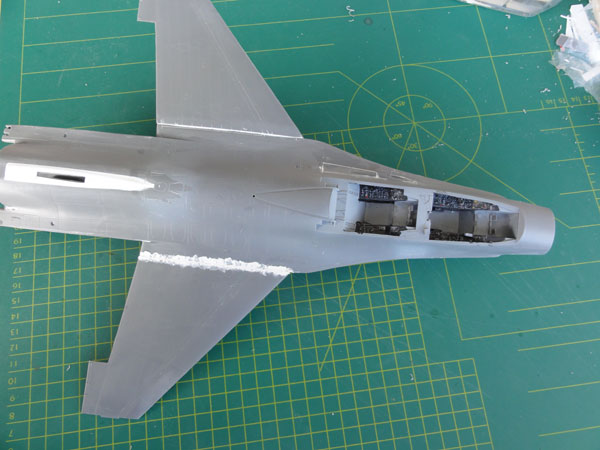
In step 19 I
had some trouble here with the radar absorbing panels parts PE5-9 provided
as etched metal with the kit. These are aft of the trailing edge and at
the stabilizer rotation points. To get a good flush fit is quite difficult.
Take some time to do it, I found out later....

(c) Copyright "designer"/ All rights reserved. Your comments are welcomed by webmaster
Created this page
November 27, 2010